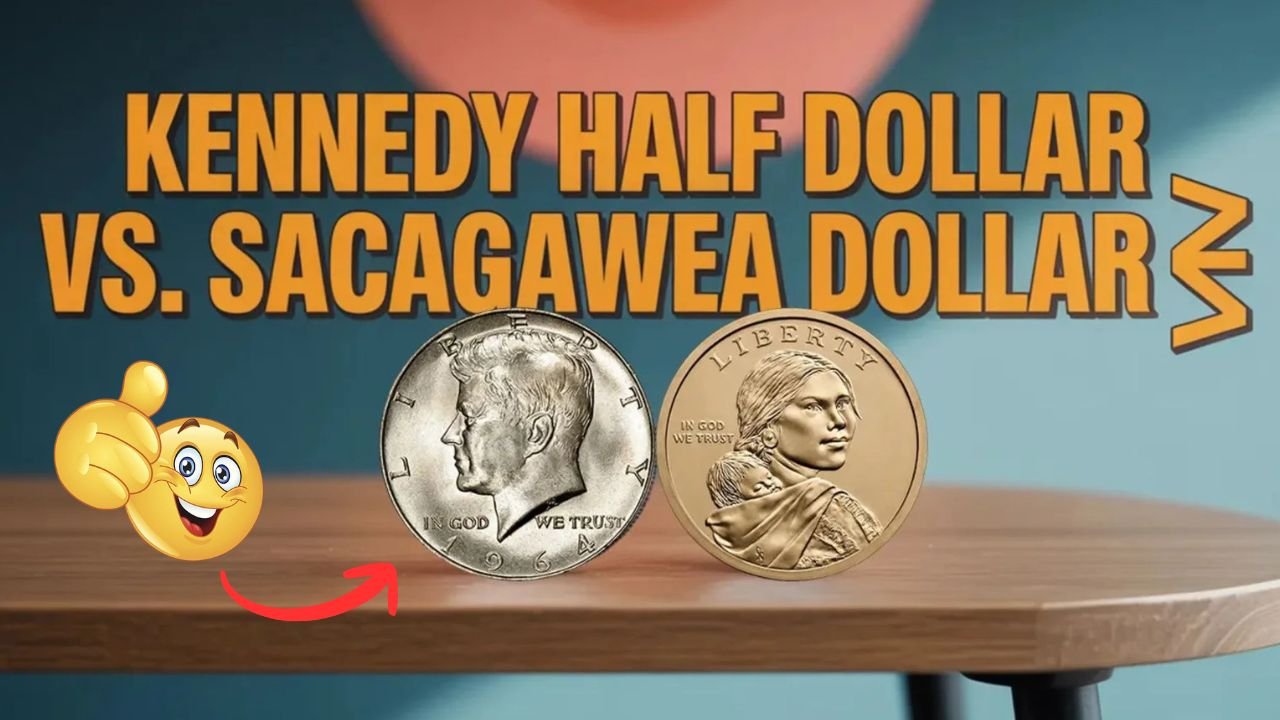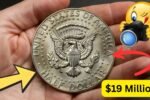Kennedy Half Dollar vs. Sacagawea Dollar: When it comes to American coins, few capture collectors’ imaginations quite like the Kennedy Half Dollar and the Sacagawea Dollar. Both have fascinating histories, unique designs, and strong sentimental value for those who admire U.S. currency. But in today’s market, one big question remains — which of these two coins is more collectible? Let’s take a closer look at each, their background, value trends, and what makes them stand out to collectors around the world.
The Story Behind the Kennedy Half Dollar
The Kennedy Half Dollar was first released in 1964, shortly after the tragic assassination of President John F. Kennedy. The U.S. Mint wanted to honor his legacy with a special coin, and the half dollar was chosen for its large size and visibility. The coin features a profile of Kennedy on the front, designed by Gilroy Roberts, while the reverse shows the Presidential Seal, designed by Frank Gasparro.
Collectors were immediately drawn to the coin not just for its design but for the emotion behind it. Millions of Americans held onto these coins as keepsakes, refusing to spend them. The 1964 version, in particular, contained 90% silver, which made it even more valuable. In later years, the silver content was reduced to 40% (1965–1970) and eventually removed entirely in regular circulation issues. Despite that change, the Kennedy Half Dollar remains one of the most beloved modern coins in U.S. history.
The Origins of the Sacagawea Dollar
The Sacagawea Dollar entered circulation in 2000, designed to replace the unpopular Susan B. Anthony Dollar. This golden-colored coin was created to honor Sacagawea, the Native American woman who helped guide Lewis and Clark during their famous expedition across the American West. The front side features Sacagawea carrying her infant son, Jean Baptiste, while the reverse originally displayed a soaring eagle.
The coin was designed by Glenna Goodacre, and its distinctive golden tone came from a mixture of manganese brass. Although visually stunning, the Sacagawea Dollar struggled to gain traction in everyday use because Americans were still more comfortable with paper currency. However, its cultural and historical significance made it an instant favorite among collectors and educators alike.
Collectibility Factors and Value Trends
When comparing the Kennedy Half Dollar and the Sacagawea Dollar, collectors look at several key factors: rarity, historical importance, and metal content.
The Kennedy Half Dollar holds an advantage in terms of precious metal value. The early silver issues (especially the 1964 version) are worth far more than face value. Uncirculated or proof versions of these coins can fetch anywhere from a few dollars to several hundred, depending on condition and rarity. Special anniversary editions and mint errors also drive up collector demand.
On the other hand, the Sacagawea Dollar series has produced a number of interesting varieties that make it collectible. One of the most famous is the 2000 Cheerios Dollar, which was distributed in cereal boxes and features a different eagle design on the reverse. Another sought-after coin is the 2000-P “Wounded Eagle” variety, known for a die gouge that resembles a scratch across the eagle’s chest. While these rare types can be valuable, most regular Sacagawea Dollars remain close to face value.
Which Coin Is More Popular Among Collectors?
Popularity often comes down to emotional connection. The Kennedy Half Dollar carries deep sentimental meaning for Americans who lived through the 1960s. It symbolizes hope, tragedy, and national pride. Many families have passed these coins down through generations, making them treasured heirlooms rather than just currency.
Meanwhile, the Sacagawea Dollar represents history and diversity. It celebrates the vital contributions of Native Americans to the nation’s story. While not as widely circulated, it has gained respect for its cultural importance and beautiful design.
However, in terms of overall collector value and long-term demand, the Kennedy Half Dollar generally comes out ahead. Its silver content, emotional history, and long-running popularity give it a stronger market presence.
Modern Collecting and Mint Releases
Both coins continue to be produced for collectors rather than general circulation. The U.S. Mint still issues special proof and uncirculated sets of the Kennedy Half Dollar each year. Some are made in silver, appealing to investors and hobbyists alike.
The Sacagawea Dollar also continues as part of the Native American $1 Coin Program, which changes the reverse design annually to honor different Native American achievements. This makes it appealing to those who enjoy artistic variety and storytelling through coin design.
Final Thoughts
In the debate of Kennedy Half Dollar vs. Sacagawea Dollar, the winner depends on what kind of collector you are. If you appreciate silver content, history, and nostalgia, the Kennedy Half Dollar is likely your top choice. But if you prefer modern artistry, cultural recognition, and design variety, the Sacagawea Dollar might hold greater appeal.
Both coins have unique stories and continue to capture the spirit of American history. Whether you’re a serious numismatist or a casual collector, adding either coin to your collection ensures you’re holding a small but meaningful piece of the nation’s legacy.
FAQs
1. Are Kennedy Half Dollars still made today?
Yes, the U.S. Mint still produces Kennedy Half Dollars, mainly for collectors and coin sets rather than everyday circulation.
2. What is the most valuable Kennedy Half Dollar?
The 1964 silver version and rare proof varieties can be worth hundreds of dollars, depending on their condition and mint mark.
3. Is the Sacagawea Dollar made of real gold?
No, it only has a golden color due to its manganese brass composition; it does not contain real gold.
4. Which coin should I collect for future value?
The Kennedy Half Dollar generally holds higher long-term value due to its silver content and historical significance.
5. Can I still spend these coins in stores?
Yes, both are still legal tender, though they are more often kept as collectibles rather than used in everyday transactions.




